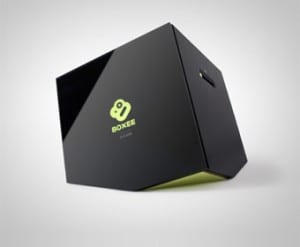CES: Boxee and Dish vs. content licensing
It’s becoming a cliché in TV land that content-rights restrictions, and not technology, are slowing the pace of industry development. At CES, Boxee and Dish demonstrated workarounds that have allowed them to offer two products frequently blocked by rights issues; namely cloud-based DVRs and out-of-home live TV viewing.
January 10, 2013

By Giles Cottle
It’s becoming a cliché in TV land that content-rights restrictions, and not technology, are slowing the pace of industry development. At CES, Boxee and Dish demonstrated workarounds that have allowed them to offer two products frequently blocked by rights issues; namely cloud-based DVRs and out-of-home live TV viewing.
Network DVRs have kept many a media lawyer in business over the last decade, but Boxee’s Cloud DVR – different from a network DVR, the company is keen to point out – provides a nice workaround to this. When users chose to record a show using the Boxee DVR, the content is pulled down to the Boxee box, transcoded in the box and sent back up the user’s broadband network to be stored in the cloud. This avoids the issue that has stymied many a network DVR, namely that copies of the content are made and stored before they hit the consumer’s set-top box. Boxee contends that, because content reaches a user’s set-top box, its solution is perfectly legal.
Dish’s latest iteration of its Hopper whole-home DVR will cause similar legal pondering. In the US at least, TV Everywhere viewing has been for the most part tethered to the home due to licensing restrictions. This year, Dish has added a new version of the Hopper integrated with Echostar’s Sling technology which takes a user’s live and DVR content and transfers it to their iOS – and soon Android – devices, wherever they are, inside or outside the home.

boxee
The Boxee Box
Some have said that the grounds on which these services sit, particularly the Hopper, are legally sketchy. But the bigger issue is that both companies have been forced into workarounds to launch services that consumers – paying consumers at that – want. And this is a problem for tech guys, content guys and consumers alike.
Read more about:
DiscussionYou May Also Like








.png?width=300&auto=webp&quality=80&disable=upscale)


_1.jpg?width=300&auto=webp&quality=80&disable=upscale)